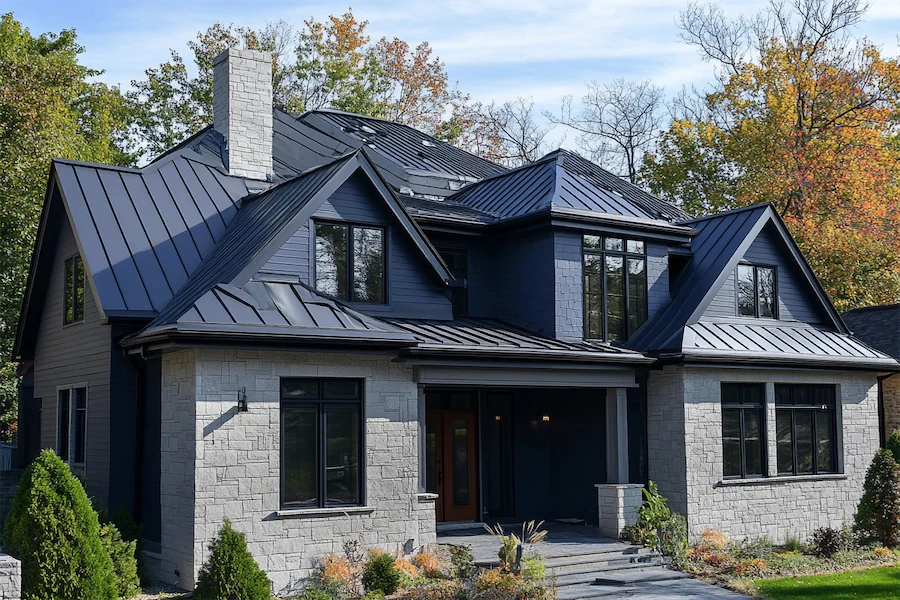A Polyvinyl Chloride (PVC) roof is a single-ply roofing membrane commonly used on flat or low-slope roofs. Comprising two layers of PVC material with a polyester reinforcement scrim in between, these membranes offer durability, flexibility, and resistance to various environmental factors.
History and Origins of PVC Roofs
PVC roofing systems were introduced in the late 1960s and have since been widely adopted in commercial and industrial building construction. After initial issues were resolved in the 1980s, PVC roofs have demonstrated proven performance for nearly 40 years.
Key Features of PVC Roofs
- Durability: PVC membranes are designed to withstand various weather conditions, including exposure to UV radiation, chemicals, and fire. They have a breaking strength of 350 pounds per square inch, exceeding the ASTM standard requirement of 200 pounds per square inch.
- Energy Efficiency: The light coloring of PVC roofs provides an energy-efficient option. While the surface of a black roof can experience a temperature increase of up to 90°F under full sun, a white reflective PVC roof typically increases only by 5 to 14°F, reducing cooling costs.
- Chemical Resistance: PVC roofing systems are highly resistant to chemicals, making them suitable for buildings exposed to industrial pollutants or grease from vents.
Applications of PVC Roofs
PVC roofing systems are ideal for commercial, industrial, and residential buildings with flat or low-slope roofs. Their chemical resistance makes them particularly suitable for restaurants and facilities with grease or chemical exposure.
Considerations When Choosing PVC Roofs
- Cost: The cost of a new PVC roof in 2024 ranges from approximately $5.15 per square foot for a 50-mil mechanically attached membrane to around $14.65 per square foot for a fully adhered 80-mil membrane system with substantial insulation.
- Installation: Proper installation by experienced professionals is crucial to ensure the longevity and performance of PVC roofing systems. The membranes are typically heat-welded at the seams to form a watertight bond.
- Environmental Impact: While PVC roofs offer energy efficiency benefits, considerations regarding the environmental impact of PVC production and disposal are important. Some manufacturers have recycling programs to address these concerns.
Conclusion
PVC roofing systems provide a durable, energy-efficient, and chemically resistant solution for flat and low-slope roofs. With a proven track record spanning decades, they remain a reliable choice for various building types, balancing performance with cost-effectiveness.
